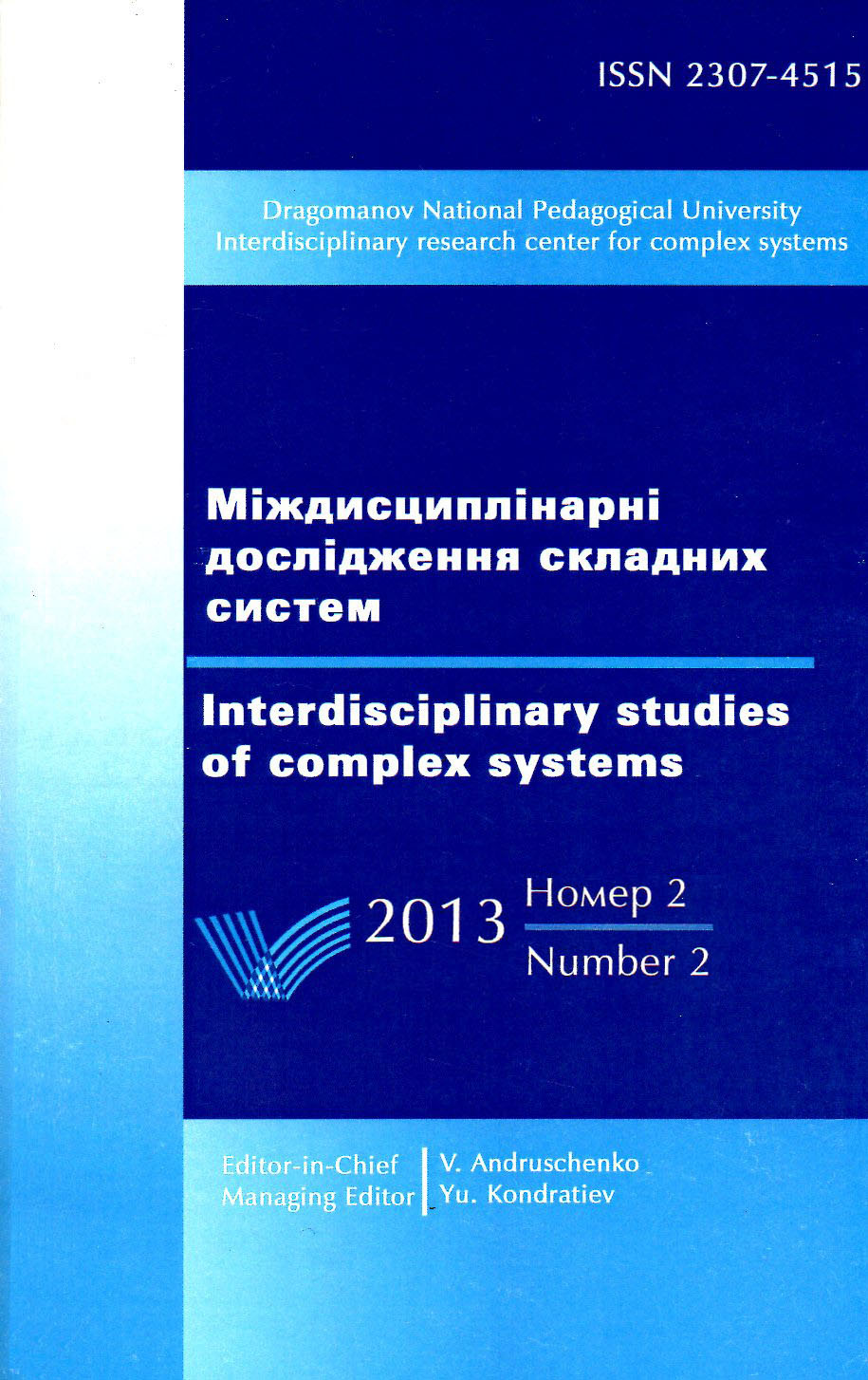Control of multiscale systems with constraints. 3. Geometrodynamics of the evolution of systems with varying constraints
DOI:
https://doi.org/10.31392/2307-4515/2013-2.2Анотація
With the use of the general variational principle of selforganization of systems with varying constraints, namely the principle of dynamical harmonization of systems presented in the first work of the cycle, we advance an approach to the control over the evolution of systems of many particles. The geometric nature of this principle is analyzed. On the basis of the de Broglie–Bohm representation of the Schro dinger equa-tion, we establish a connection of the nonlocality and the coherence of the systems of many particles with mass entropic forces. The defining role of a coherent acceleration and a space-time curvature in the control over the synthesis of new structures in systems with varying constraints is demonstrated. The basic criteria for electromagnetic fields to initiate the processes of self-organizing synthesis and for the quantum properties of a nonlocality on macroscopic scales, which are necessary for the selforganizing synthesis, are formulated.##submission.downloads##
Опубліковано
2013-11-22
Номер
Розділ
Наукові публікації
Ліцензія
Автори, які публікуються у цьому журналі, погоджуються з наступними умовами:- Автори залишають за собою право на авторство своєї роботи та передають журналу право першої публікації цієї роботи на умовах ліцензії Creative Commons Attribution License, котра дозволяє іншим особам вільно розповсюджувати опубліковану роботу з обов'язковим посиланням на авторів оригінальної роботи та першу публікацію роботи у цьому журналі.
- Автори мають право укладати самостійні додаткові угоди щодо неексклюзивного розповсюдження роботи у тому вигляді, в якому вона була опублікована цим журналом (наприклад, розміщувати роботу в електронному сховищі установи або публікувати у складі монографії), за умови збереження посилання на першу публікацію роботи у цьому журналі.
- Політика журналу дозволяє і заохочує розміщення авторами в мережі Інтернет (наприклад, у сховищах установ або на особистих веб-сайтах) рукопису роботи, як до подання цього рукопису до редакції, так і під час його редакційного опрацювання, оскільки це сприяє виникненню продуктивної наукової дискусії та позитивно позначається на оперативності та динаміці цитування опублікованої роботи (див. The Effect of Open Access).











